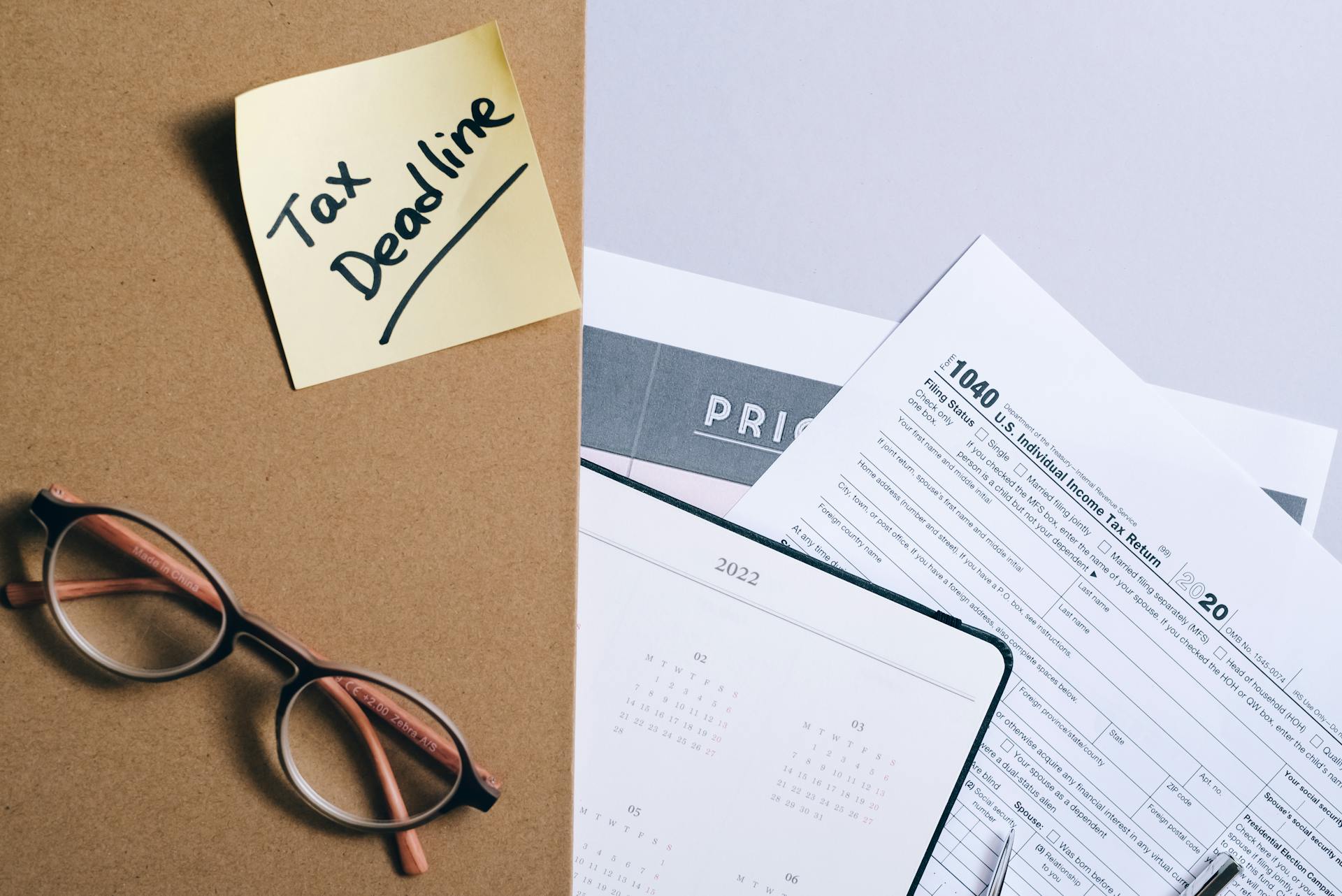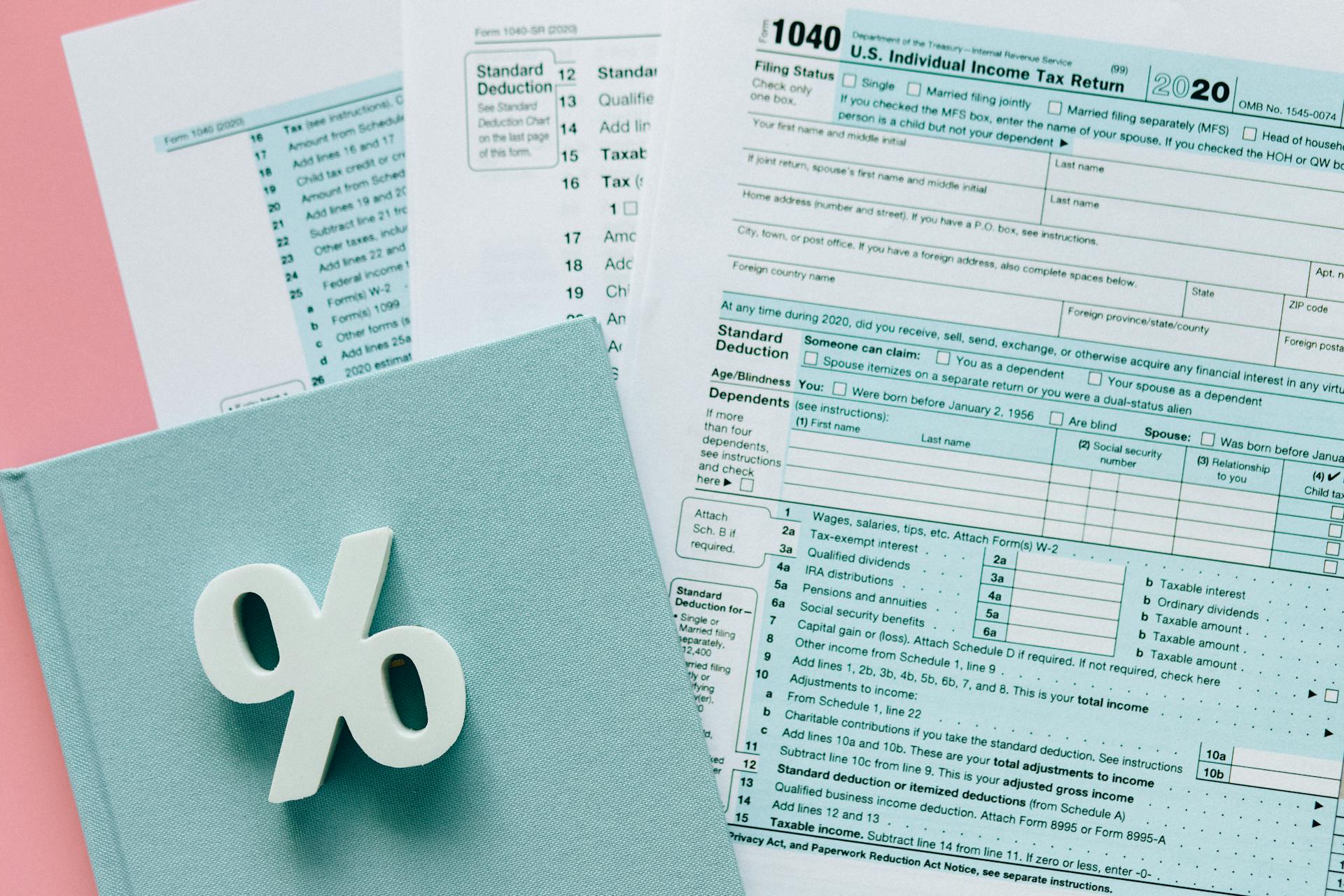
To buy convertible bonds, you'll typically need to approach a financial institution, such as a bank or investment firm, that offers this type of investment.
Convertible bonds allow you to convert the bond into a predetermined number of shares of the issuer's common stock at a predetermined price, known as the conversion price.
You can also buy convertible bonds through a brokerage firm, which will charge you a commission on the trade.
The conversion ratio is the number of shares of common stock you'll receive when you convert the bond, and it's usually expressed as a fraction or a ratio of shares per bond.
Suggestion: Common Stock Dividend Distributable
What Are Convertible Bonds?
Convertible bonds are a type of investment that combines the features of stocks and bonds, allowing investors to convert their bond holdings into a predetermined number of shares of the issuing company's common stock.
They are typically issued by companies to raise capital, and can be a attractive option for investors looking for a lower-risk investment with the potential for higher returns.
Consider reading: Private Equity Investments for Small Investors
Convertible bonds have a face value, which is the amount the bondholder will receive when the bond matures, and a conversion price, which is the price at which the bondholder can exchange their bond for shares of the company's common stock.
The conversion price is usually set at a premium to the current market price of the common stock, giving the bondholder a potential upside if the stock price increases.
Convertible bonds can be issued with a variety of features, including a conversion ratio, which determines how many shares of common stock the bondholder will receive when they convert their bond.
The conversion ratio is typically set at a fixed number of shares per bond, and can be a multiple of the face value of the bond.
Investors should carefully review the terms and conditions of a convertible bond before investing, as the conversion ratio and other features can impact the potential returns on investment.
The conversion period is the time during which the bondholder can convert their bond into common stock, and can vary from bond to bond.
A different take: When to Buy Gold
Types of Convertible Bonds
Convertible bonds are issued in various types, each with its unique features. There is no formal classification of convertible bonds in the financial markets.
Underwriters often refer to several types of convertible bonds. The most commonly issued convertibles include different features.
Convertible bonds are a popular investment option for many investors. However, it's essential to understand the different types to make informed decisions.
There are several types of convertible bonds, each with different features.
How to Buy Convertible Bonds
You can buy convertible bonds through an indirect investment vehicle like an exchange-traded fund (ETF), mutual fund, or closed-end fund.
These investment vehicles can help you gain exposure to convertible bonds without having to purchase individual bonds.
An ETF will seek to match the performance of a particular convertible bond benchmark, while active mutual funds and closed-end funds try to outperform the benchmark by selecting a subset of convertible issues.
For example, if you want to avoid Tesla's convertibles due to its high delta, you can consider mutual funds or closed-end funds that don't hold Tesla's convertibles.
You can also purchase individual convertible bonds directly through your brokerage account.
Investors who want to diversify their portfolio can consider multiple investment vehicles to gain exposure to convertible bonds.
Related reading: B Riley Preferred Stock
Understanding Convertible Bonds
Convertible bonds are a type of financing option for companies that offers investors a hybrid security with features of both bonds and stocks. A convertible bond provides investors with the flexibility to convert their bonds into shares of the issuing company's stock at a predetermined conversion price.
The conversion ratio determines how many shares of stock you can get from converting one bond, such as a 5:1 ratio meaning one bond converts to five shares of common stock. The conversion price is the price per share at which a convertible security can be converted into common stock, and it's set when the conversion ratio is decided.
A company might force or exercise their right to call the bond if interest rates are favorable, which means the investor doesn't have a say in holding or converting their bond. If you don't convert a convertible bond, you can simply let it ride to maturity and let it act like a regular bond.
If this caught your attention, see: Converting Equipment
Here's a quick breakdown of key terms:
- Conversion rate: The number of common stock shares the bondholder receives when exchanging a convertible bond.
- Conversion price: The price per share at which a convertible security can be converted into common stock.
- Conversion premium: The difference between the market price of a convertible bond and its conversion value.
What Is a Bond?
A bond is a type of debt security that provides an investor with a right to receive fixed payments, typically in the form of interest or principal repayment.
Companies issue bonds to raise capital, and they usually come with a maturity date, after which the bond's face value is returned to the investor.
Bonds typically pay interest to investors, but some bonds, like convertible bonds, offer more flexibility and potential for growth.
Convertible bonds can be exchanged for a predetermined number of shares in the issuing company, making them a hybrid security that combines debt and equity features.
Companies with a low credit rating and high growth potential often issue convertible bonds, which may be more attractive to investors due to their growth potential through future capital appreciation of the stock price.
Investors who hold convertible bonds can choose to convert them to stock, but if the stock performs poorly, they may be stuck with a subpar return on the bond.
Curious to learn more? Check out: Buy Berkshire Hathaway B Shares
Understanding
A convertible bond is a type of debt security that provides an investor with a right or an obligation to exchange the bond for a predetermined number of shares in the issuing company at certain times of a bond's lifetime.
Convertible bonds have features of both debt and equity, making them a hybrid security. They come with a maturity date and pay interest to investors, just like regular bonds. However, if an investor decides not to convert their bonds to equity, they will receive the bond's face value at maturity.
The conversion ratio determines how many shares can be converted from each bond. This can be expressed as a ratio or as the conversion price and is specified in the indenture along with other provisions. For example, a conversion ratio of 45:1 means one bond with a $1,000 par value can be exchanged for 45 shares of stock.
The conversion price is the price per share at which a convertible security can be converted into common stock. It is set when the conversion ratio is decided for a convertible security. The conversion price and ratio can be found in the bond indenture or the security prospectus.
Broaden your view: Can I Sell Us Treasury Bonds before Maturity
A bond issuer might force or exercise their right to call the bond if interest rates are favorable, which means the investor does not have a say in holding or converting their bond.
Here are some key terms related to convertible bonds:
- Conversion price: The price per share at which a convertible security can be converted into common stock.
- Conversion ratio: The number of shares that can be converted from each bond.
- Conversion premium: The difference between the market price of a convertible bond and its conversion value.
- Conversion value: The convertible bond value if the bond is converted to stock.
- Par value: The face value of the bond, usually $1,000.
- Coupon rate: The annual interest rate paid on a bond.
Note: The conversion ratio, conversion price, and par value are all important factors to consider when evaluating a convertible bond.
Expand your knowledge: Conversion Ratio for Convertible Bonds
Conversion Process
The conversion process is a crucial aspect of convertible bonds, and it's essential to understand how it works. The conversion ratio determines how many shares can be converted from each bond, which can be expressed as a ratio or as the conversion price.
A conversion ratio of 45:1 means one bond can be exchanged for 45 shares of stock. The conversion price and ratio are specified in the indenture along with other provisions.
As the stock price rises, the price of the bond begins to rise, and your convertible performs similarly to a stock option. This is because the bond closely follows the underlying share price.
The conversion ratio is also a key factor in considering the value and attractiveness of a convertible bond. A higher conversion ratio means investors get more common stock for each converted bond.
For example, if the face value of the bond is $1,000 and the current share price or conversion price is $20, then the conversion ratio is 50. Bonds with higher conversion ratios are more attractive to investors, especially if the stock price is rising.
You might enjoy: Healthcare Angel Investors
Taxes
Taxes can be a bit tricky with convertible bonds, but don't worry, I've got you covered. If you hold convertible bonds in a tax-advantaged account, the rules may be different, but we'll focus on the general guidelines.
The interest income from convertible bonds is generally taxable as ordinary income in the year it's received. This means you'll need to report it on your tax return.
Convertible bonds typically pay periodic interest payments to bondholders, usually semiannually or annually, based on the bond's coupon rate and face value. These payments continue until the bond matures or is converted into equity.
Readers also liked: Reits for Retirement Income
If a convertible bond is converted into shares of the issuing company's stock, any capital gains or losses realized from the sale will likely be subject to capital gains tax. However, the conversion itself is not typically taxable.
Some convertible bonds may be issued at a discount to their face value, resulting in an original issue discount (OID). OID is generally taxable as ordinary income over the life of the bond, regardless of whether you hold the bond to maturity or sell it before maturity.
Here's a quick rundown of what you need to know about taxes and convertible bonds:
- Interest income is taxable as ordinary income
- Capital gains or losses from selling shares are subject to capital gains tax
- OID is taxable as ordinary income over the life of the bond
- Qualified dividends may be eligible for preferential tax treatment
Advantages and Disadvantages
Convertible bonds can be a great addition to your investment portfolio, offering a unique combination of fixed income and potential for capital appreciation.
Investors can benefit from the potential for capital appreciation, as they can convert their bonds into shares if the company's stock price rises above the conversion price.
You might like: Roark Capital Subway
Regular income is also a plus, as convertible bonds offer fixed interest payments, providing a steady stream of income.
However, there's a catch - the conversion risk is real, and if the company's stock price doesn't rise above the conversion price, investors are limited to the fixed interest payments.
Companies can benefit from issuing convertible bonds, as it allows them to raise capital without immediately diluting their ownership.
But, there's a trade-off - companies may pay lower interest rates on their debt compared to traditional bonds, which can be a double-edged sword.
Here are some key advantages and disadvantages of convertible bonds to consider:
Ultimately, convertible bonds can be a valuable addition to your investment portfolio, but it's essential to carefully weigh the pros and cons before making a decision.
Example and Glossary
Let's break down the key concepts related to convertible bonds. Convertible bonds have a conversion value, which is the bond's value if it's converted to stock, calculated by multiplying the conversion rate by the stock price. This value can be significantly lower than the investment value, making it a busted convert.
The conversion premium is the difference between the market price of a convertible bond and its conversion value, and it's usually expressed as a percentage. For example, Tesla's 2% Convertible Senior Note had a conversion premium of 27% when it was issued in 2019. This means that Tesla's stock price would need to increase by 27% for bondholders to break even when exchanging the bonds into stock.
Here's a quick rundown of some key terms related to convertible bonds:
- Conversion rate: The number of common stock shares the bondholder receives when exchanging a convertible bond.
- Conversion value: The convertible bond value if the bond is converted to stock.
- Conversion premium: The difference between the market price of a convertible bond and its conversion value.
- Par value: The face value of the bond, usually $1,000.
Bond Example
A convertible bond allows bondholders to convert their bonds into shares of the issuing company's stock, providing flexibility in their investment.
Tesla issued a 2% convertible senior note in May 2019 with a conversion rate of 3.2276 shares per $1,000 par value.
The conversion value is calculated by multiplying the conversion rate by the stock price at issuance, which was $244 per share for Tesla's stock.
The conversion value for Tesla's convertible issue in May 2019 was $787.53.
Intriguing read: Us Treasury Bond Coupon Rate
The conversion premium is the difference between the par value and the conversion value, and for Tesla's issue, it was $212.47.
The conversion premium expressed as a percentage is 27%, which means Tesla's stock price would need to increase by 27% for bondholders to break even when exchanging the bonds into stock.
By late 2019, Tesla's stock price had risen to a level where it was profitable for investors to make the conversion.
Recommended read: Tsla Etfs
Bond Glossary
As you explore the world of convertible bonds, you'll come across a range of terms that might seem confusing at first. But don't worry, I'm here to break it down for you.
A busted convert is a type of convertible bond where the conversion value is significantly lower than the investment value. This can be a tricky situation for investors.
The conversion price is calculated by dividing the convertible bond par value by the conversion ratio. It's essentially the price at which the bond can be converted into stock.
The conversion premium is the difference between the market price of a convertible bond and its conversion value. This can give you an idea of the bond's potential value.
Here's a quick rundown of some key terms:
- Coupon rate: The annual interest rate paid on a bond.
- Delta: A measure of a convertible bond’s price relative to its common stock price.
- Investment value: The intrinsic price of the fixed income component of a convertible bond.
- Investment premium: The market price of the convertible bond less its investment value.
- Par value: The face value of the bond, usually $1,000.
The conversion rate is the number of common stock shares the bondholder receives when exchanging a convertible bond. This can be a valuable piece of information for investors looking to convert their bonds.
Frequently Asked Questions
What is the minimum price of a convertible bond?
The minimum price of a convertible bond is the higher value between its conversion value and its bond value. This is the lowest price at which a convertible bond can be issued.
Featured Images: pexels.com


